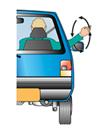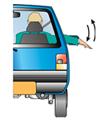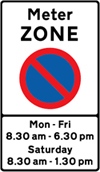แนวข้อสอบ Life in the UK Test 1 - 48 จำนวน 1,152 ข้อ
https://www.theuktest.com/life-in-the-uk-test/1
https://www.theuktest.com/life-in-the-uk-test/2
https://www.theuktest.com/life-in-the-uk-test/3
https://www.theuktest.com/life-in-the-uk-test/4
https://www.theuktest.com/life-in-the-uk-test/5
https://www.theuktest.com/life-in-the-uk-test/6
https://www.theuktest.com/life-in-the-uk-test/7
https://www.theuktest.com/life-in-the-uk-test/8
https://www.theuktest.com/life-in-the-uk-test/9
https://www.theuktest.com/life-in-the-uk-test/10
https://www.theuktest.com/life-in-the-uk-test/11
https://www.theuktest.com/life-in-the-uk-test/12
https://www.theuktest.com/life-in-the-uk-test/13
https://www.theuktest.com/life-in-the-uk-test/14
https://www.theuktest.com/life-in-the-uk-test/15
https://www.theuktest.com/life-in-the-uk-test/16
https://www.theuktest.com/life-in-the-uk-test/17
https://www.theuktest.com/life-in-the-uk-test/18
https://www.theuktest.com/life-in-the-uk-test/19
https://www.theuktest.com/life-in-the-uk-test/20
https://www.theuktest.com/life-in-the-uk-test/21
https://www.theuktest.com/life-in-the-uk-test/22
https://www.theuktest.com/life-in-the-uk-test/23
https://www.theuktest.com/life-in-the-uk-test/24
https://www.theuktest.com/life-in-the-uk-test/25
https://www.theuktest.com/life-in-the-uk-test/26
https://www.theuktest.com/life-in-the-uk-test/27
https://www.theuktest.com/life-in-the-uk-test/28
https://www.theuktest.com/life-in-the-uk-test/29
https://www.theuktest.com/life-in-the-uk-test/30
https://www.theuktest.com/life-in-the-uk-test/31
https://www.theuktest.com/life-in-the-uk-test/32
https://www.theuktest.com/life-in-the-uk-test/33
https://www.theuktest.com/life-in-the-uk-test/34
https://www.theuktest.com/life-in-the-uk-test/35
https://www.theuktest.com/life-in-the-uk-test/36
https://www.theuktest.com/life-in-the-uk-test/37
https://www.theuktest.com/life-in-the-uk-test/38
https://www.theuktest.com/life-in-the-uk-test/39
https://www.theuktest.com/life-in-the-uk-test/40
https://www.theuktest.com/life-in-the-uk-test/41
https://www.theuktest.com/life-in-the-uk-test/42
https://www.theuktest.com/life-in-the-uk-test/43
https://www.theuktest.com/life-in-the-uk-test/44
https://www.theuktest.com/life-in-the-uk-test/45
https://www.theuktest.com/life-in-the-uk-test/46
https://www.theuktest.com/life-in-the-uk-test/47
https://www.theuktest.com/life-in-the-uk-test/48
ที่มา :: http://prapasarako.blogspot.co.uk/2017/01/life-in-uk-test.html
https://sites.google.com/site/prapasara/w21
http://www.hiren.info/life-in-the-uk-test/1

















